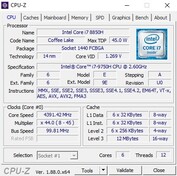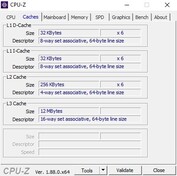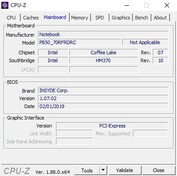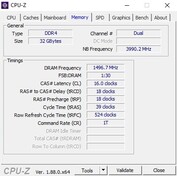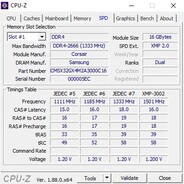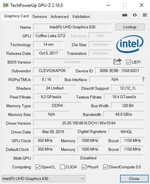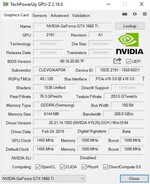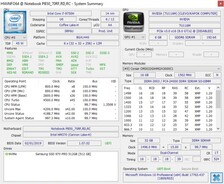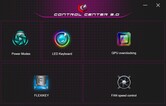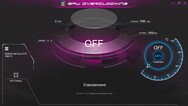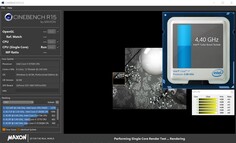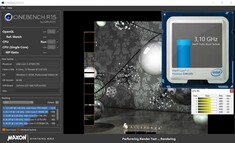NVIDIA GeForce GTX 1660 Ti Laptop GPU Review
With the GeForce GTX 1660 Ti, NVIDIA rounds off its current high-end portfolio. The DirectX 12-capable GPU sits between other midrange and flagships cards, offering good performance and value for money while keeping waste heat and power consumption to a minimum.
The GTX 1660 Ti does not support raytracing like its RTX 20 series siblings do. However, only a handful of games currently support the technology and enabling it results in a huge loss of performance, so its omission here does not feel like that great of an oversight. Only a few games like Battlefield V, Metro Exodus and Shadow of the Tomb Raider support DLSS and raytracing at the time of writing, but we expect this to change in the coming months and years.
Nevertheless, the GTX 1660 Ti resembles the GeForce RTX 2060 in some respects. Both GPUs have 6 GB GDDR6 VRAM that operates on a 192-bit connection, although they diverge in other areas. While the GeForce RTX 2060 has 1,920 CUDA cores and runs at between 960 and 1,200 MHz, the GTX 1660 Ti has just 1,536 shaders. However, it also clocks between 1,455 and 1,590 MHz, which is significantly higher than what the GeForce RTX 2060 manages.
Test System
The basis for our performance test is the Clevo PB51RC, a barebones machine that the German manufacturer Schenker Technologies kindly provided us. Please keep in mind that our test device is not a retail unit so our results will not match 1:1 with the finished version. We expect no major changes beyond the GPU drivers, but we wanted to point this out anyway. Our review device had ForceWare 419.25 beta drivers installed at the time of testing, for reference.
| Laptop | Clevo PB51RC |
|---|---|
| Processor | Intel Core i7-9750H |
| RAM | 2x 16 GB DDR4 2,666 MHz |
| Storage Devices | 512 GB SSD |
| Graphics Card | NVIDIA GeForce GTX 1660 Ti |
| Shader units | 1,536 |
| Core clock speed | 1,455 MHz |
| Turbo clock speed | 1,590 MHz |
| VRAM | 6 GB GDDR6 |
| Memory connection | 192 Bit |
| Memory clock | 6,000 MHz |
| Drivers | ForceWare 419.25 |
Our test configuration includes 32 GB of DDR4 2,666 MHz RAM running in dual-channel mode and a 512 GB NVMe SSD. The system is powered by Intel's brand-new Core i7-9750H processor, which is effectively a higher-clocked version of the popular Core i7-8750H. The Core i7-9750H has a 2.6 GHz base clock and 4.5 GHz turbo clock speed, which are both 400 MHz higher than at which the Core i7-8750H operates. The Clevo PB51RC also has a matte Full HD display that has a 144 Hz refresh rate. The device forgoes G-Sync for NVIDIA Optimus, which allows it to switch between Intel and NVIDIA graphics. We paired the Clevo PB51RC with a UHD external display for our QHD and 4K tests, for reference.
Our review unit manages its Core i7-9750H clock speeds well, but it does not make full use of the CPU’s turbo boost across all cores. The CPU briefly operates at 4.4 GHz in multithreaded benchmarks like Cinebench R15 Multi 64Bit, but it quickly drops to approximately 3.1 GHz where it stabilises.
The GTX 1660 Ti uses its turbo well too, but it also does not operate at its full potential. According to GPU-Z, the GTX 1660 Ti averaged 1,665 MHz in the UNIGINE Heaven 4.0 benchmark. It can clock up to 1,905 MHz, but it could not consistently run at this speed.
Synthetic Benchmarks
DirectX 11
The GTX 1660 Ti scored 14,193 points in 3DMark Fire Strike, which puts it well ahead of the GeForce GTX 1060 in the ASUS ROG Zephyrus S GX531GM and only 8% behind the GeForce RTX 2060 in the Schenker XMG Ultra 15. The GeForce GTX 1070 in the Acer Predator Helios 500 scores 24% more than the GTX 1660 Ti here, but the gap between the two GPUs is significantly smaller in other benchmarks.
| 3DMark - 1920x1080 Fire Strike Graphics | |
| Schenker XMG Ultra 15 | |
| Schenker XMG Ultra 17 | |
| Schenker XMG Ultra 15 | |
| Acer Predator Helios 500 PH517-51-79BY | |
| Schenker XMG Ultra 15 | |
| Schenker Compact 15 | |
| Asus Zephyrus S GX531GM | |
DirectX 12
The more demanding the benchmark, the greater the advantage the GTX 1660 Ti has over the GeForce GTX 1060. While the GTX 1660 Ti "only" scored 25% more than its older sibling in Fire Strike, it manages almost 50% more in Time Spy. Additionally, the Clevo PB51RC scored just 6% lower than our GeForce GTX 1070 and GeForce RTX 2060-equipped comparison devices in this benchmark, which puts the GTX 1660 Ti much closer to NVIDIA’s nominally more powerful GPUs.
| 3DMark - 2560x1440 Time Spy Graphics | |
| Schenker XMG Ultra 15 | |
| Schenker XMG Ultra 15 | |
| Schenker XMG Ultra 17 | |
| Schenker XMG Ultra 15 | |
| Acer Predator Helios 500 PH517-51-79BY | |
| Schenker Compact 15 | |
| Asus Zephyrus S GX531GM | |
Gaming Benchmarks
Full HD (1920x1080)
For most readers, real gaming performance is likely to be of greater interest than synthetic benchmark results. Here, the GTX 1660 Ti is no slouch either. Take the multiplayer hit Battlefield V, for example, where the Clevo PB51RC averaged 93.2 FPS at 1080p at maximum graphics. We also set the game to DirectX 11 with no DLSS, for reference. The GeForce GTX 1070 and GeForce RTX 2060 crack the 100 FPS mark here and average 9% higher frames than the GTX 1660 Ti, but we doubt that many people would notice the difference while gaming.
| Battlefield V - 1920x1080 Ultra Preset | |
| Schenker XMG Ultra 15 | |
| Schenker XMG Ultra 15 | |
| Asus G752VS | |
| Alienware 17 R4 | |
| Schenker XMG Ultra 15 | |
| Schenker Compact 15 | |
| MSI GT62VR | |
QHD (2560x1440)
Even gaming at QHD does not push the GTX 1660 Ti to its limits. Our review unit averaged 68.7 FPS at this resolution, which should look smooth to most eyes. The older GeForce GTX 1060 falls below the magical 60 FPS threshold but still delivers playable frame rates, while the GeForce GTX 1070 and GeForce RTX 2060 remain around 9% ahead of the GTX 1660 Ti.
| Battlefield V - 2560x1440 Ultra Preset | |
| Schenker XMG Ultra 15 | |
| Schenker XMG Ultra 15 | |
| Alienware 17 R4 | |
| Asus G752VS | |
| Schenker XMG Ultra 15 | |
| Schenker Compact 15 | |
| MSI GT62VR | |
UHD (3840x2160)
Gaming in 4K at ultra-graphics is beyond the capabilities of the GTX 1660 Ti. Our review unit averaged 38.3 FPS in Battlefield V at these settings, which feels a bit jerky. Likewise, the GeForce GTX 1070 and GeForce RTX 2060 cannot average more than 41 FPS, so they are not suitable for gaming at these settings, either. Incidentally, the GeForce GTX 1060 slips further behind here and averaged 28% lower frame rates than the Clevo PB51RC. Owners of a 4K display should consider using a GeForce GTX 1080-equipped laptop or better if they want to experience smooth frame rates. Even the GeForce RTX 2080 averaged just 68.1 FPS at maximum graphics settings, despite its enormous power.
| Battlefield V - 3840x2160 Ultra Preset | |
| Schenker XMG Ultra 15 | |
| Schenker XMG Ultra 15 | |
| Alienware 17 R4 | |
| Schenker XMG Ultra 15 | |
| Asus G752VS | |
| Schenker Compact 15 | |
| MSI GT62VR | |
Verdict
If the GeForce GTX 1660 Ti continues to deliver performance in line with our initial measurements, then it will be a fine GPU for gaming laptops. It offers a decent bump in performance over the GeForce GTX 1060 and delivers noticeably higher frame rates. The added performance allows the GeForce GTX 1660 Ti to play modern triple-A games comfortably in QHD at maximum graphics, which is something that its older sibling cannot quite manage.
Taking all the results together, the GTX 1660 Ti ranks at about the same level as the GTX 1070 Max-Q and sometimes can even match the full GTX 1070, albeit the model with a lower TDP. The GTX 1660 Ti is usually also within striking distance of the RTX 2060, allowing you to achieve comparable performance at a much lower cost if you are prepared to forgo raytracing.
In short, the GeForce GTX 1660 Ti is a perfect companion for laptop gaming at 1080p. The card even has enough power for gaming at QHD, which is mighty impressive.





